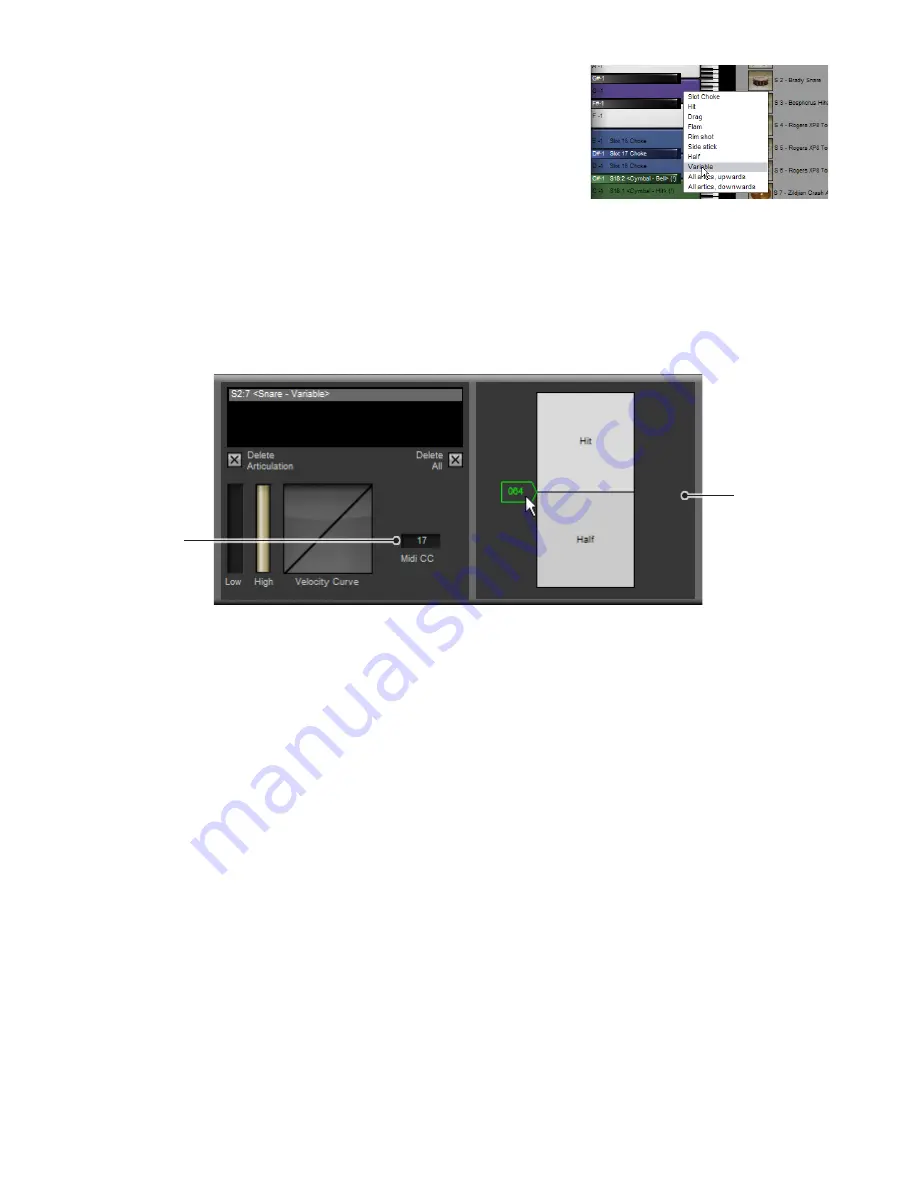
1
9:5 Positional snare control
The BFD2 soundset features a ‘half-edge’ snare articulation, which is the head of the
snare struck halfway between the centre and the edge. The regular ‘hit’ articulation,
on the other hand, is a result of the snare head being struck in the centre.
The Variable snare articulation allows you to access the hit and half-edge articula-
tions using the positional sensing of snares in electronic drum systems such as those
by Roland.
Positional sensing works by the drum brain sending out a MIDI CC representing the
distance from the centre (where the value is 0) and the edge (value 127).
In order to utilize this functionality, a variable snare articulation must be mapped in BFD2. Typically, you should assign it to the key
normally assigned to the ‘hit’ articulation, typically D2. Please make sure that it is the only articulation on the key – delete any
articulations that may have originally existed on the key.
Variable snare controls
Once a variable snare is mapped, select the key on which the mapping exists and select the variable snare articulation in the
mapping inspector. The variable snare controls are shown.
MIDI CC
Firstly, define a MIDI continuous controller to use as the source for the positional information. Click and drag the MIDI CC value
up and down to set the CC number. You can also define this MIDI CC in the MIDI page Automation view by mapping the relevant
kit-piece slot’s ‘Position’ parameter to the desired MIDI CC.
On Roland kits, this MIDI CC is usually CC #17.
Adjusting positional response
A position slider is also provided in the variable snare advanced mapping settings, in order to define the MIDI CC# value repre-
senting the boundary between the hit and half-edge articulation ‘zones’. Simply drag the point up or down on the slider in order to
change the boundary between the zones. If the point is set at 64, this means that the two zones are set as follows:
0-
-1
hit
half-edge
This essentially means that the hit articulation is used if the snare pad is struck up to half-way from the centre, beyond which the
half-edge articulation is played when the pad is struck.
9:6 Controlling cymbals
Many electronic drumkits feature manual choking of cymbals by ‘grabbing’ the cymbal trigger. Such systems usually involve a
pressure controller on the cymbal, which sends out polyphonic aftertouch (poly pressure) messages associated with the cymbal
MIDI notes.
You can use this feature in BFD2 by enabling the Choke with aftertouch setting in the MIDI preferences. Please note that after-
touch choking only works on cymbals in actual cymbal slots.
If your e-drum system features positional sensing on the cymbal, please note that BFD2 does not currently respond to this fea-
ture.
Variable snare
controls
Snare position
MIDI CC






























